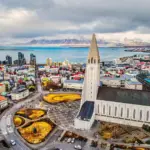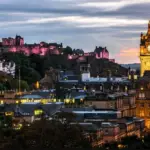A Journey Through Nepal's Capital in the Heart of the Sacred Valley

Introduction
Since time immemorial, the city of Kathmandu has been a cultural and geographical landmark in the heart of Nepal. As the country's capital, this vibrant and multifaceted metropolis attracts visitors from all over the world, eager to explore its rich historical heritage and stunning geographic location. In this article, we'll delve into the depths of this magical city and marvel at the wonders it has to offer.
Kathmandu, the capital of Nepal
But where is it? KathmanduSituated in the Kathmandu Valley, surrounded by the majestic Himalayan mountain ranges, Kathmandu is one of Asia's oldest and most fascinating cities. With a diverse population of both native and foreign Nepalese, this cosmopolitan metropolis is the country's political, cultural, and economic epicenter. Kathmandu's history dates back over 2,000 years.
It is believed to have been founded during the Licchavi period by Gunakamadeva, a powerful king of the time. Over the following centuries, the city grew in political and religious importance as the center of the Gorkha Kingdom until it became the capital of modern Nepal in 1769.
overview of the geographical location of Nepal
Nepal is located in the South Asian region and borders China to the north and India to the south, east and west. This strategic location has made Nepal a transitional country between these two Asian powers, influencing its history, culture and economy.
With an area of approximately 147,516 square kilometers, Nepal is a mountainous country, with the Himalayan mountain range dominating its landscape. Some of the highest mountains in the world are located in Nepal, including the iconic Mount Everest.
Furthermore, Nepal is blessed with rich biodiversity and a variety of ecosystems, ranging from the flat plains of the Terai to the high, snow-capped mountains. This geographic diversity makes Nepal a popular destination for nature lovers and outdoor sports enthusiasts.
Historical and cultural context of Kathmandu Origin and evolution of the city over the centuries
Kathmandu, the capital of Nepal, has a rich history dating back thousands of years. The city is believed to have been founded in the 3rd century BC, during the Licchavi period. However, more concrete historical records begin in the 12th century, when the rulers of the Malla dynasty established their rule over the Kathmandu Valley.
During this period, Kathmandu flourished as an important political, cultural, and commercial center. Over the centuries, Kathmandu underwent several socioeconomic and political changes.
Under Malla rule, the city expanded considerably in size and population. Malla rulers were also responsible for building numerous temples and plazas that remain cultural icons to this day.
In the 18th century, power fell to the Shah dynasty of Nepal, which unified the country under its rule. During this period, many magnificent royal palaces were built in Kathmandu, and the monarchs contributed to the city's artistic and architectural development.

Cultural and religious influences that shaped the city
Kathmandu is a real melting pot cultural due to the varied influences throughout its history. The city was strongly influenced by Hinduism – Nepal's majority religion – and Buddhism.
These two religions coexist harmoniously in Kathmandu, and many Hindu and Buddhist temples can be found throughout the city. Tibetan influence is also evident in Kathmandu, especially in the area known as Boudhanath.
The site is home to Nepal's largest stupa, an important pilgrimage site for Tibetan Buddhists. Tibetans also brought their rich artistic culture to the city, with workshops for thangka (traditional Tibetan paintings) and handicrafts.
Furthermore, external cultural influences have also left their mark on Kathmandu. The city was an important stopover along the ancient Silk Road trade route, which led to the arrival of foreign merchants and contributed to an even greater blend of cultures.
In short, Kathmandu's historical and cultural context is deeply rooted in centuries of fascinating history. The city's origins and evolution over the centuries have shaped its unique identity, while diverse cultural and religious influences continue to play an essential role in the daily lives of locals.
The majestic geographical location of Kathmandu
Exact geographic coordinates of the city
Kathmandu is located at the geographic coordinates 27°42'N latitude and 85°19'E longitude. This strategic position places Nepal's capital in the central region of the country, providing a crucial connection between various parts of the country. These coordinates represent only a small fraction of the vastness that Kathmandu encompasses, but they are crucial to understanding its precise location on the world map.
Situated in the Kathmandu Valley, surrounded by majestic mountains
Kathmandu is situated in the stunning Kathmandu Valley, which stretches for approximately 25 square kilometers. This valley is formed by the hills and mountains of the central Himalayas and is surrounded by some of the most stunning mountain ranges in the world.
To the north lie the imposing Langtang and Ganesh Himal mountains; to the south, the Mahabharat Lekh mountains stretch magnificently. This privileged position gives Kathmandu a unique and enchanting atmosphere, where nature meets culture human.
Explore the geographical significance of Kathmandu
Kathmandu's geographic location in the Valley has provided substantial benefits throughout history. The surrounding mountains served as a natural barrier against foreign invasions, making the city a safe haven for its inhabitants.
Furthermore, the valley boasts fertile soils, perfect for agriculture and the cultivation of rice, wheat, and other crops essential to the local population's livelihood. This unique combination of a stunning city surrounded by majestic mountains and fertile soil makes Kathmandu a truly special place on Earth.
How to get to Kathmandu
Tribhuvan International Airport – Main entry point for international travelers
Kathmandu is easily accessible by air via Tribhuvan International Airport, which serves as the main entry point for international travelers. Located about 6 km from the city center, the airport offers a wide range of domestic and international flights.
Renowned airlines, such as Nepal Airlines and several foreign carriers, operate routes to popular destinations around the world. Tribhuvan International Airport is well-equipped with modern facilities, including duty-free shops, restaurants, and currency exchange bureaus.
Ground transportation options, including scenic roads and trails
Besides air travel, there are also delightful ground transportation options for reaching Kathmandu. Scenic roads connect Kathmandu to several cities in Nepal and also to neighboring countries like India and China. Travelers can choose to take a bus or taxi for an unforgettable overland experience while enjoying the stunning mountain scenery.
Additionally, many enthusiastic tourists choose to hike to Kathmandu along the scenic trails that wind through the surrounding mountains. These trails offer incredible panoramic views and are a great opportunity for nature lovers and adventurers to explore on foot.
Exploring Kathmandu by Public Transport
Within Kathmandu, the travelers have several transportation options public transport to explore the city and its surroundings. Minibuses are a popular and economical way to get around, with routes covering virtually every corner of the city. Taxis are also available, both regular and shared, offering greater comfort and convenience.
Bicycles are also a viable option for those who want to move around the city at their own pace. For those who enjoy walking, Kathmandu is a relatively compact city, allowing many popular tourist attractions to be easily accessible on foot.
what to do in Kathmandu
In Kathmandu, the capital of Nepal, there are numerous activities and sights to explore. Here are some suggestions for what to do in Kathmandu:
- Discover the Thamel neighborhood: Thamel is a bustling and popular neighborhood in Kathmandu, known for its shopping, restaurants, and nightlife.
- Kathmandu Durbar Square: This historic square is a UNESCO World Heritage Site and houses ancient palaces, temples and statues.
- Swayambhunath: Also known as the “Monkey Temple,” Swayambhunath is one of the oldest and most sacred Buddhist temples in Nepal, located on a hill with panoramic views of the city.13.
- Boudhanath: This is one of the largest stupas in the world and an important pilgrimage site for Buddhists. It is a peaceful and spiritually significant place.
- Pashupatinath: This is a Hindu temple dedicated to the god Shiva. It is a sacred place where cremations and religious rituals take place.
- Garden of Dreams: A neoclassical garden built in 1920, near the Thamel neighborhood. It's a peaceful place to relax and enjoy the beauty of the gardens.
- Kopan Monastery: Located in the hills of Kathmandu, this Buddhist monastery offers spiritual retreats and meditation courses.
These are just a few of the many activities and attractions in Kathmandu. The city boasts a rich history, culture, and spirituality, offering visitors a unique experience.
Notable Geographical Features Around Kathmandu The Bagmati River
The city of Kathmandu is blessed with the majestic presence of the Bagmati River, which plays a fundamental role in both the geography and culture of the region. This sacred river holds great religious significance for the Nepalese, being revered as a place of spiritual purification. It is believed that Bagmati River is a manifestation of the Hindu divinity itself, and its waters are considered sacred and purifying.
Along the riverbanks, it's common to find pilgrims performing religious rituals, ritual baths, and funeral ceremonies. Besides its religious significance, the Bagmati River also has remarkable physical characteristics.
Its waters flow through several rocky stretches and picturesque waterfalls, providing a stunning landscape for those visiting the city. The lush vegetation along the banks contributes to the river's scenic beauty.
In addition, the river also serves as an important source of water supply for neighboring areas and as a habitat for various aquatic species.

Mountains – silent witnesses to the natural grandeur surrounding Kathmandu
The city of Kathmandu is privileged to be surrounded by some of the world's most imposing mountains, creating a panoramic and inspiring backdrop. To the north of the city lies the majestic Himalayan mountain range, with peaks that touch the heavens.
Among them is the Mount Everest, the highest mountain in the world. These mountains not only add beauty to the landscapes around Kathmandu, but also play an important role in the region's economy.
The mountains near Kathmandu offer opportunities for adventure Outdoor activities and mountain tourism. Hiking enthusiasts and climbers can explore challenging trails and climb to the base camps of famous mountains.
Furthermore, these colossal rock formations provide an unshakable presence in Nepalese culture, being considered sacred by the locals.

The harmonious geographical interaction between the Bagmati River and the majestic mountains surrounding Kathmandu
Kathmandu's geographical location is truly unique, blessed by the harmonious interplay between the Bagmati River and the majestic mountains that surround it. The sacred river adds both cultural and aesthetic value to the city, while the imposing mountains provide an inspiring atmosphere and opportunities for outdoor activities.
The presence of the Bagmati River allows Nepalese people to connect with their religion and spirituality, while the natural beauty of the mountains leaves an indelible mark on the hearts of all who behold them. Kathmandu is a place where nature and culture meet, creating a truly special place.
Therefore, when visiting Kathmandu, it's essential to explore both the river and the surrounding mountains to fully appreciate its geographic and cultural richness. After all, this unique interplay between the Bagmati River and the majestic mountains perfectly encapsulates Nepal's natural grandeur.
Lucas Wanderlust has a tireless spirit of adventure, always seeking new travel experiences. Fascinated by the world and the possibility of exploring unknown destinations, he fell in love with the sense of freedom and self-discovery that traveling alone provides. With a backpack on his back and a heart open to the unknown, Lucas embarks on exciting journeys, where each destination becomes a unique chapter in his life story. He gives himself body and soul to the magic of solo travel, inspiring others to follow in his footsteps and discover themselves through adventure.







